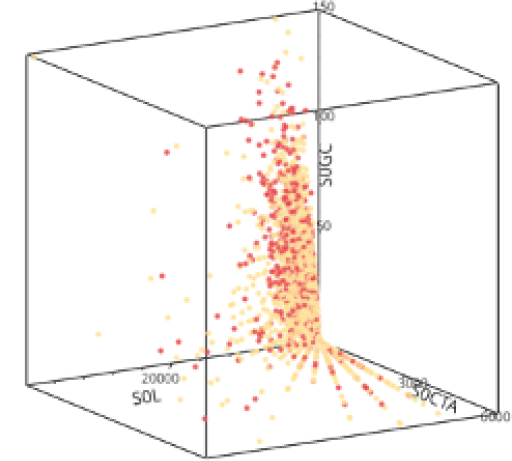Example Identification of Disengaged Users using 3 Features

Engaged Users
Disengaged Users
Pictoword School is responsive to shifts in student play patterns that keep
each learner engaged. Our machine learning algorithm uses the gameplay
data of more than 80,000 anonymized users. 90% of this data is used to
train the model, and 10% of the data is used to test the model. The gameplay
data includes over 40 features, such as average session length, games completed,
and hint usage. Using Gradient Boosted Tree (GBT), we are able to determine the likelihood
of student engagement with a good accuracy (ROC AUC = 0.94).
